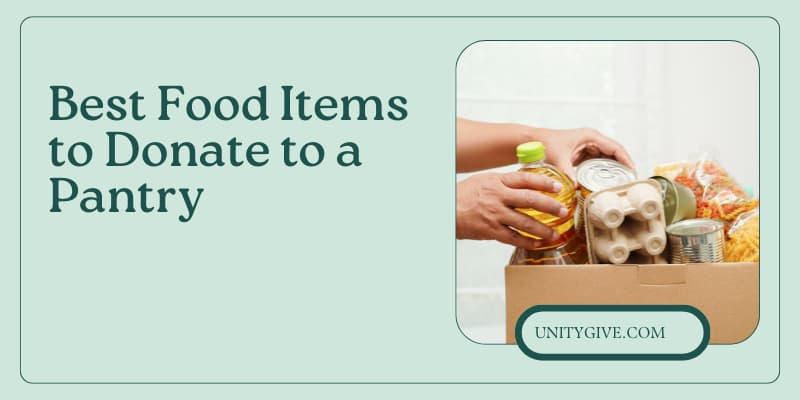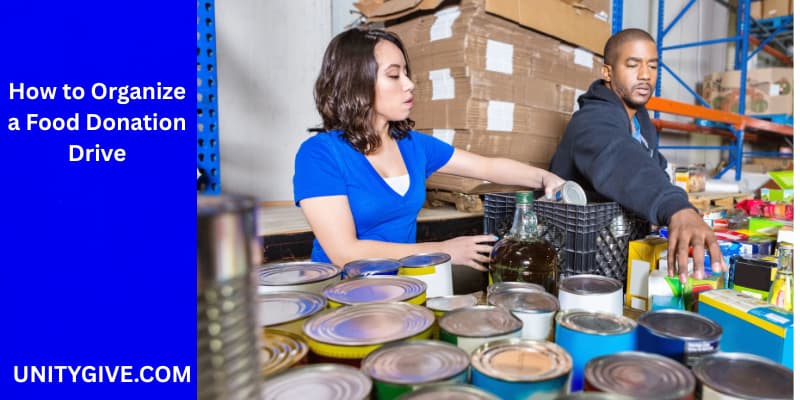Organizing a food donation drive is a powerful way to give back to the community and help those in need. With the rise in food insecurity worldwide, your efforts can make a real difference. However, it’s important to plan and execute the drive efficiently to maximize its impact. In this blog post, we will guide you through the process of organizing a successful food donation drive with a focus on key strategies, tips, and best practices.
Understanding the Need: Why Organize a Food Donation Drive?
Before diving into the logistics, it’s essential to understand why organizing a food donation drive is so important. The increasing number of individuals and families facing hunger makes it crucial to provide support. Food drives address this need by collecting non-perishable items to distribute to food banks, shelters, and community centers.
By organizing a drive, you help raise awareness about food insecurity while also providing tangible support. It fosters a sense of unity within your community and promotes social responsibility. The success of your drive can contribute to long-term solutions, such as increased food access and better support systems.
Planning and Setting Goals for Your Drive
Effective planning is the foundation of a successful food donation drive. Here are some crucial steps to ensure your event is well-executed:
a. Set Clear Objectives
What do you want to achieve with this food drive? Are you aiming to collect a specific amount of food, or do you have a target number of families or organizations to help? Setting clear goals will give your team a sense of direction.
b. Choose the Duration
Decide how long the food drive will run. Will it be a one-day event, a weekend collection, or a month-long campaign? Be realistic about the time frame based on your resources and community involvement.
c. Select the Location(s)
Choose convenient and high-traffic locations where people can drop off donations. Popular spots include schools, local businesses, churches, and community centers. If you’re working with a specific organization or shelter, coordinate with them to arrange collection points.
Coordinate with Food Banks or Charities
Collaborate with local food banks and charitable organizations to understand their needs. They can provide valuable insights into what types of food are most needed. Many food banks have lists of donation preferences (e.g., low-sodium, canned vegetables, or gluten-free options), and adhering to these preferences ensures that your efforts align with what’s most useful.
Additionally, establishing a partnership with a reputable charity will streamline the logistics of food distribution after your drive is complete. Many charities also provide posters, flyers, or other promotional materials, which can help with your outreach.
Promote Your Drive
To get people excited about participating, promotion is key. Utilize a combination of digital and traditional marketing strategies to spread the word.
a. Create Engaging Content
Use social media platforms like Facebook, Instagram, Twitter, and LinkedIn to create buzz. Design attractive posters or infographics that include details such as the purpose, dates, location(s), and the types of food needed. Consider creating a hashtag for your event to track participation and generate online engagement.
b. Leverage Local Media
Reach out to local newspapers, radio stations, or community blogs to promote your drive. These platforms can help you reach a wider audience and encourage more people to donate.
c. Involve Influencers
Partner with local influencers or community leaders who can help amplify the message. Their involvement can help drive donations and increase participation.
Organize Volunteers for the Event
You can’t do everything alone, so gathering a group of dedicated volunteers is essential. They can assist with tasks such as:
- Setting up collection points
- Sorting and organizing donations
- Promoting the drive at events
- Managing donation records

Be sure to train your volunteers on how to handle food donations safely, ensuring they follow guidelines for sorting and packaging.
Collecting and Storing Donations Safely
When collecting donations, be mindful of food safety and proper storage. Here are some helpful tips:
- Check Expiration Dates: Ensure all donated food is non-expired and in good condition.
- Store Properly: If the food needs to be stored for any amount of time, make sure it’s kept in a clean and dry place to prevent spoilage.
- Sort Donations: Sort donations by type to make the distribution process smoother.
Thank and Acknowledge Donors
Recognizing the generosity of your donors is a key part of a successful food donation drive. Thank everyone who contributed, whether through social media shoutouts, personal thank-you notes, or even hosting a small appreciation event. Acknowledging their support will encourage them to participate in future drives.
Distribute the Donations
Once your food drive is over, coordinate with your charity partner to arrange the logistics of food delivery. It’s important to follow up with the food banks or shelters to ensure the donations are reaching the people who need them most.
Evaluate and Reflect on the Drive
After the drive, evaluate the overall success of the event. Did you meet your goals? What went well, and what could be improved for next time? Gathering feedback from volunteers, donors, and recipients can help improve your future food donation campaigns.
Read Also: The Importance of Donating Shoes to Homeless SheltersConclusion
Organizing a food donation drive is a powerful and rewarding way to give back to your community. By planning carefully, setting clear goals, and involving local organizations and volunteers, you can maximize the impact of your efforts. Remember that the success of your food drive depends not only on collecting food but on raising awareness, fostering community engagement, and ensuring that your efforts contribute to the long-term fight against hunger.
By following these steps, you will create an organized and impactful food donation drive that helps nourish those in need while strengthening the bond within your community. Together, we can create a world where no one goes hungry.
FAQ’s: How to Organize a Food Donation Drive
What types of food should I collect for a food donation drive?
Non-perishable items such as canned goods, pasta, rice, cereal, peanut butter, and canned fruits and vegetables are always in high demand. Check with your local food bank for any specific needs or dietary preferences.
How can I promote my food donation drive effectively?
Use a mix of social media posts, flyers, community bulletin boards, and local media to spread the word. Partnering with local influencers or community leaders can also help generate more interest.
How do I organize volunteers for a food donation drive?
Reach out to local community groups, schools, or businesses for volunteer support. Assign specific tasks, such as collecting donations or sorting food, and make sure volunteers are trained on food safety guidelines.
How do I ensure the food donations are safe and in good condition?
Check expiration dates, ensure the packaging is intact, and store the food in a clean, dry place to maintain its quality. Follow safety protocols for handling perishable food if applicable.
What should I do after the food donation drive is over?
Thank all your donors and volunteers publicly through social media or thank-you cards. Also, follow up with the receiving charity to ensure the donations reach those in need and evaluate the success of the drive for future improvement.





